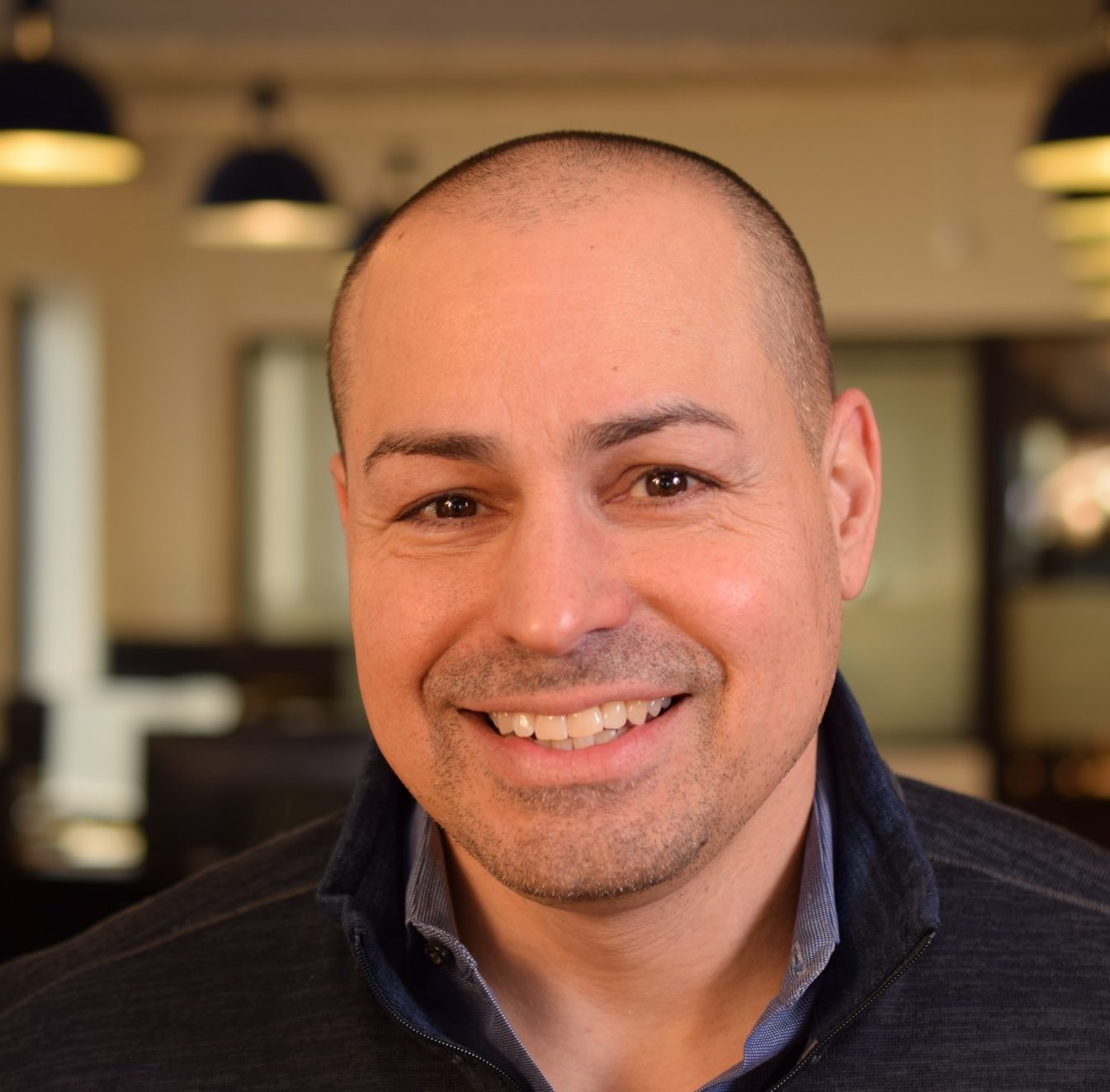What are we talking about?
Building the best team you can.
Why is building a great team important for the future of work?
There’s a lot of bias that goes into finding the best fit for your team. It’s important to bring in other opinions. Diagnostic tools like the Predictive Index can also be a big help.
What did Swati Doshi teach us about building a great team?
“People can assume or think that they know what they are looking for, but until they start meeting candidates, they’re like, ‘Oh wait, we need to change the job description.'”
Building the best team is hard to do. You might think you know exactly what you need, but after you start, you’ll soon switch your parameters.
Many leaders like to trust their own intuition when building a strong team. Intuition is important qualitative data, but it shouldn’t be the only thing you rely on.
Swati talks about the trend that she’s seeing that many companies are getting rid of reference checks, but thinks that’s a bad way to go. There are better ways to remove bias and the reference check is a key point.
Swati uses the Predictive Index to help leaders find people who fit their style and so that you can have a common language when it comes to know what kind of person will succeed in a given role.
We talked about whether or not you’d be able to ‘genetically engineer’ the perfect team in the future. Swati said that if it was possible, it is still a long way in the future.
Overall, diagnostic tools should help you gain more empathy when building a great team. You can know more about the behavioral drives of others, have a common language, and increase your own self-awareness.
More from Swati Doshi
Today, our guest is Swati Doshi. She’s the Founder and Managing Director at Human Results. And this episode is Work Minus Bias. Hi, Swati. How are you?
Good, good. How are you doing?
Excellent. We’re very excited to have you on the show. I want you to start off just telling us a little bit about yourself and about Human Results.
I started Human Results about four years ago after being at Google for nearly a decade. My main goal is to help ambitious CEOs achieve the results that they desire through their most valuable asset, their people. We spend a lot of time getting to know and understand our clients and their business, and benchmark that against the best practices that I and my team have seen at birth companies like Google, established companies like Johnson & Johnson and Accenture. The past four years, we’ve been solely focused on tech startups. So by getting to know their business, we help map a people strategy that aligns to their business strategy, so that they can then have the people and we take things a step further and actually help our clients hire and build those inspiring teams that can actually execute on the strategy and plans that they’ve come up with.
It’s obviously great to think about, I want to build a team that can do this, but then actually get down and say, this person is going to be able to help you. This is the one you need. That’s the next level, right? You work a lot with a tool called Predictive Index. I’m sure a lot of people are familiar with it. But if you can give a little background of that, too.
It’s a workforce analytics tool. I feel that people are just getting familiar with the Predictive Index. It’s actually a company that’s been around since the late 1960s. But it was a family run business, and I had never heard of it until Predictive Index had approached me and asked me if I wanted to be a certified partner. I was familiar with Insights, Hogan, Myers-Briggs, but the Predictive Index was unknown. But I was quite impressed by the fact that two serial entrepreneurs who had gone to Harvard Business School together and have utilized the tool in their own businesses and saw massive success, wanted to help really scale and invest the technology in the company. So, I’ve been quite impressed with how they took the company which was primarily a behavioral assessment and job assessment company to now adding cognitive assessments, employee engagement surveys, strategy assessments, and a whole tool of people data and science so that our clients can make more informed decisions.
How would you compare Predictive Index to other tools that have been out there longer, people talking about disk a lot still, people talk about Myers-Briggs, even like new things like enneagram that are now like in style, how would you compare PI to those?
I would say what I like most about PI is that it’s a whole entire platform. It’s a town optimization platform. It doesn’t just look at people’s behaviors. It’s also free choice where a lot of these other assessments, like Hogan or Myers-Briggs, it’s forced choice where people have to select between an option. I know when I took Hogan I was like, “Am I done yet?” And it was just done with one section of it, where Predictive Index literally takes on average six minutes to complete. It’s two questions. There’s 86 adjectives, which then gives us information on how somebody is naturally wired, how they might be adopting or changing based on what they perceive others expect of them. There’s also a cognitive assessment, which is actually the number one predictor of how somebody will do in regards to job performance and training success. So, it’s much more comprehensive, and it’s really quick and integrates with so many other aspects that the C suite and HR leadership needs to be looking at. It’s not just one little piece of the puzzle that then needs to get integrated into other things.
Let’s step back. Our audience is out there. They’re leading companies, they’re in this maybe growth stage is going through. Building the right team is obviously high on everyone’s mind. They want to build a high performing team. They want to build a team that enjoys working together, that has a good culture together, that really has a lot of trusts, clarity, camaraderie together. So, where does a tool like PI come in? Where does work like you come in? How should CEOs think about building those teams at the start?
From the start, they have to be very clear on creating that people strategy that maps to the business strategy. What that means is, what kind of culture do they need to be developing? Do they need an innovative culture because they’re a growing startup or they need to create new lines of business? Are they more process oriented? So, getting very clear on the culture that the organization needs to be operating in to match the business objectives. Then they need to think about the teams that they need to design. What is the work that needs to be done? As somebody who spent five years recruiting at one of the world’s best companies, Google, I found then and definitely see it now is that people can assume or think that they know what they’re looking for. But until they start meeting candidates, they’re like, oh, wait, we need to change the job description. So, getting clarity on what’s the work that needs to be done, what are the behavioral drives, and the ideal cognitive ability and agility that we need somebody to have to take on this role is really important, because when you have that benchmark data, it also allows you to look at candidates in a more unbiased way.
There’s been lots of studies. There was a study from Princeton and Harvard, that found that just removing names from a resume would increase the likelihood of hiring a woman between 25% to 46%. So now imagine if we just looked at people’s behavioral drives and their cognitive agility against the benchmarks that we need, and then started looking at further into the resumes and seeing if the experiences match, if people’s values, passions, and interests align with that of the company’s. You’re just going to get a much more diverse pipeline and you’re not going to let unconscious bias creep in. When the markets are great and there’s a war for talent, you have to be very prudent and careful about making sure you’ve got the hire right, because you’re going to have to be very competitive with salary, you’re going to want to hire quickly. And when the economy is hitting a downturn, which we may or may not be going into, HR leaders are going to get flooded with resumes. So, how do they pick the best candidate for the work that needs to be done out of the thousands of resumes that they’re likely to see? It’s really an objective measurement tool that can help identify what’s the work that needs to be done. And then you can utilize a structured interview process and all the other nitty gritty things that we like to consult our clients on.
At what point do you feel like when you’re talking to these leaders, maybe startup companies or companies that are in that growth phase, it seems to me that your main thing you’re trying to work against is intuition, because a lot of leaders feel like, I need somebody for this role. They have a role in mind, but then they’ll say, okay, write the job description. I know what it is so I’ll just explain it or I’ll know the right person when I see them. There’s all this intuition that comes in from that leadership role. Just bring me in somebody, I’ll assess their culture fit. I’ll ask them a few questions. I’ll feel it. How do you counteract that? At what point is that good to have some of that feeling and intuition and at what point do you need to be like, it’s a bias you have, it’s going to prevent you from building the best team?
I think intuition is a data point. It’s based on people’s experiences, past history, some softer things that aren’t necessarily able to quantify in terms of somebody’s energy or what have you. But what I really like about the job assessment and the process that we utilize with our clients is that it’s not just the hiring manager that’s making and providing input on the job description and the factors that we’re looking for. But with this technology, we have the ability to send the job assessment to stakeholders, we have the ability to see who’s the highest performing person in this role. Ask them what they think needs to be, we can look at cross functional colleagues, and perhaps even send it to a client or two if somebody’s in a client facing role as to what the benchmark should be. So, again, technology allows us to scale. So, by applying technology and to figuring out what it is that we’re looking for, we get the hardcore, quantitative data. And if you’re matching and utilizing qualitative data, which I lump intuition in there as well, then you’re going to be able to make a better hire using everything that’s at your disposal, both the qualitative and quantitative data.
What do you feel like are the limits of what we have now in terms of the technology behind, not only Predictive Index, but other tools that are out there? Obviously, they’re getting better all the time. They’re becoming more skilled in being able to assess things. But what do you feel like are still the holes that are either unknowable to either human or to the system to know ahead of time, or the things that we can see ahead of time to go and to prevent again. So, what do you feel like are some of those holes that are still there?
I think some of the holes that exist are that humans are complex. And they’re constantly evolving and changing, especially when major life events happen, values, passions, and interests can change. When there is a need, people act in their self interest, for better or worse. If people are applying for a job and they know that an assessment is being utilized, they might read and study up and try to game the assessments that are utilized. They might not be honest about their passion for the industry or what it is that the company is doing. I think also neuro diversity, a lot of these assessments don’t necessarily account for that. The cognitive assessment is a 12-minute timed assessment. But if somebody comes out and says, I actually have a disability, I need more time. That’s something that can be done, but that’s not always comfortable or safe for a candidate to express that.
So, that’s why no decision should just be made on just one assessment. You really have to look at how a candidate answers interview questions. You need to utilize behavioral questions, case studies. A lot of companies, unfortunately, are getting rid of reference checks, thinking that they are biased. But if reference checks are done in the right way, and in the interest of setting up a candidate for success, that’s another form of data. Those are some factors that I think can skew some of these assessments. It can get very dangerous if people are making hiring decisions just looking at one factor. We absolutely advise our clients to look at the total package and to look at the full picture and to continue doing those reference checks, and investing a lot of time in those reference checks, too, doing those in a safe environment. Letting the person know who’s providing feedback that you’re collecting data to ensure that onboarding and ramping up and long-term work relationships are set up for success from day one.
One of the big things we like to talk about on Work Minus is empathy. Tell us how a tool like Predictive Index can actually help build empathy. It’s a way of maybe technology enabling humans to be more empathetic with each other.
I’m really glad you brought that up because it’s one of the most important things to have teams that perform well. I believe it was MIT’s center of collective intelligence did a little study and found that people who were socially sensitive and had empathy, those teams were some of the highest performers. They also had gender diversity, and they gave each other equal time to talk. And a tool like the Predictive Index that has some of that workforce data and analytics, and when we come in and do training and educate the entire employee group on what the different profiles mean, and how to interpret the four measures, the behavioral drives that we talked about and how to read the patterns, then people can better understand their colleagues using a common language and they can also increase their self awareness. Because empathy comes from being able to self regulate your own emotions, your own experiences, and being able to understand what others are experiencing or feeling but not necessarily jump into that sinking boat with them when something terrible is going on. Having a tool like this that integrates with common technologies like Slack and once you ingrain the different ways that people prefer to behave and are naturally wired, there’s more understanding and more appreciation for the diversity and the different ways that people might think, act, make decisions that may be very different than yours.
We’ve called this episode Work Minus Bias. Obviously, we’ve talked about different types of hiring bias on the show before. Why specifically do CEOs need to think about bias? And what are some of the biases even? We talk about unconscious bias, but there’s all sorts of areas of bias that they may not even be aware of that they are doing. We talked about how culture fit can often be an area to fit bias into. When you think about that word, when we think about a world without bias, especially when it comes to hiring, what does that mean for you?
I think that’s a really big conundrum when we think about culture fit and also hiring for job fit and keeping inclusion and diversity in mind. If we are just looking at culture fit then that’s where biases are more likely to come into play. Oh, this person’s scrappy, they’re able to move and act quickly. And they might be biased against people that they might label as having analysis paralysis and they like to look at data and things such as that. There’s all types of biases that exist, from socioeconomic to gender to ethnic and cultural differences to even how people go about making decisions. There’s been a plethora of well reputed companies and organizations. I mentioned MIT’s center of collective intelligence McKinsey and Company. They ran studies both in 2015 and 2018. And the 2018 study proved that the relationship between diversity and business performance persists and companies that have more gender diversity, have more cultural diversity, are likely to outperform by 20% to 27%. They also have better value creation. So, doing whatever you can to mitigate biases by utilizing objective data can allow companies to hire better. And then it’s not just about hiring. It’s about creating that culture of inclusion, creating things like a culture of ownership. And that comes when you can help people better understand each other, creating that psychological safety, and knowing that if everybody in the organization is very proactive, quick to act, very scrappy, then nobody’s sitting back and looking at the bigger picture and really crunching the numbers and doing some data analysis that could be really critical and maybe take the actions that are being taken in a slightly different direction that could make all the difference in the world to customers or to even internal culture.
Do you imagine a day in the future when we can pretty much genetically engineer a team that is optimized for the perfect performance? Do you think we’ll get there? Or should we get there?
I don’t know if we should get there, honestly, because lots of learnings happen from mistakes and failures. I think we can do what we need to do and leverage the tools and assets that we have to make sure that we’re hiring the best person who’s naturally wired and driven and has the cognitive agility to perform a job but then we can get more creative and try different things out and create experiments by allowing people to switch their roles and switch departments within an organization and see what happens. When you break down silos and you try to say like, let’s see what happens if we stick an engineer with a bunch of recruiters. What can they come up with? I don’t believe in perfection. And I think that there’s a lot more learning that can happen with failure, and when we do experience failure, that also helps increase our empathy. I feel like it’s all linked and we should never strive for perfection.
Great. Swati, I’m glad you’re doing what you’re doing. I think you’re the right person to be helping companies think about these things, to use these tools, to recognize that technology can help us be more empathetic, that it can help us to understand these things and to build better teams, that it needs to have total control of everything but it has its place, definitely. Where can people go to stay in touch with you and learn more about your work?
Sure, absolutely. Our website humanresults.com is a great place to learn about our company and what we’re up to. Then people can always connect with me on LinkedIn. It’s Swati D. Doshi.
Thanks. I’ll put those links on our show notes. Thanks so much for being on the show.
Thanks for having me.
Swati champions talent optimization within organization by helping companies leverage the value and skills of their employees. She’s had the opportunity to partner with CEOs to double the size of their workforce, and has coached senior leadership at prominent companies. Swati and her staff have facilitated imposter syndrome and coaching workshops for organizations committed to diversity. Clients such as CB Insights, Element, and eSalon enlist Swati for their targeted consulting needs.
Prior to founding Human Results, she worked at Google for eight years in North America and Asia, having immersed herself in People Operations. As a respected leader within the Google community, Swati was chosen as an internal career coach and team facilitator for workshops on Unconscious Bias and Maximizing Team Performance. Before joining Google, Swati managed sales for Johnson & Johnson and Eli Lilly, which followed her tenure as a management consultant at Accenture.
Swati earned her Bachelor of Business Administration from The George Washington University and has continued her education in Coaching and Project Management at Columbia University and Stanford University. In her spare time, Swati enjoys hiking, being by the water, reading and meeting people around the globe – she considers herself a professional networker and connector.












